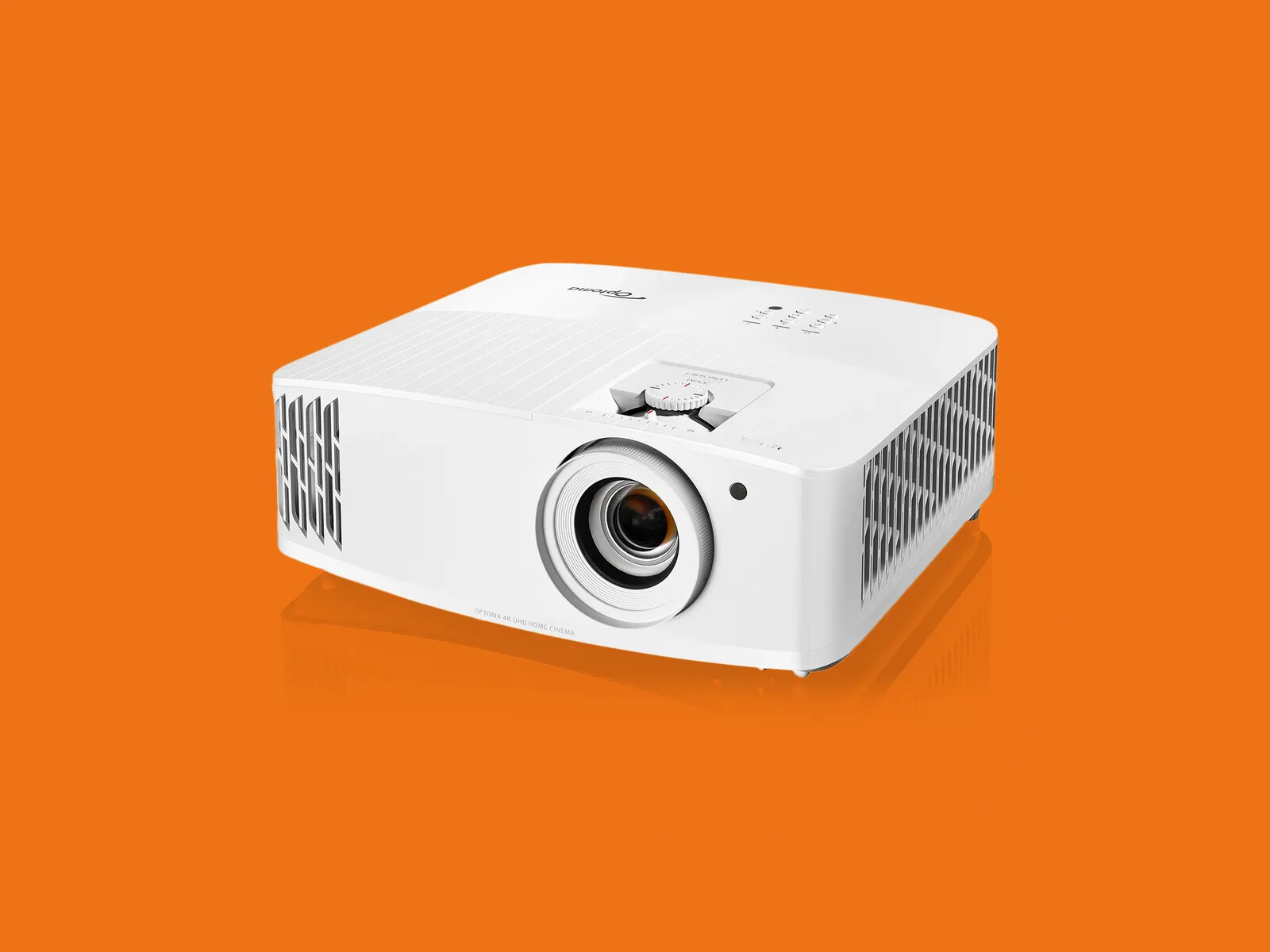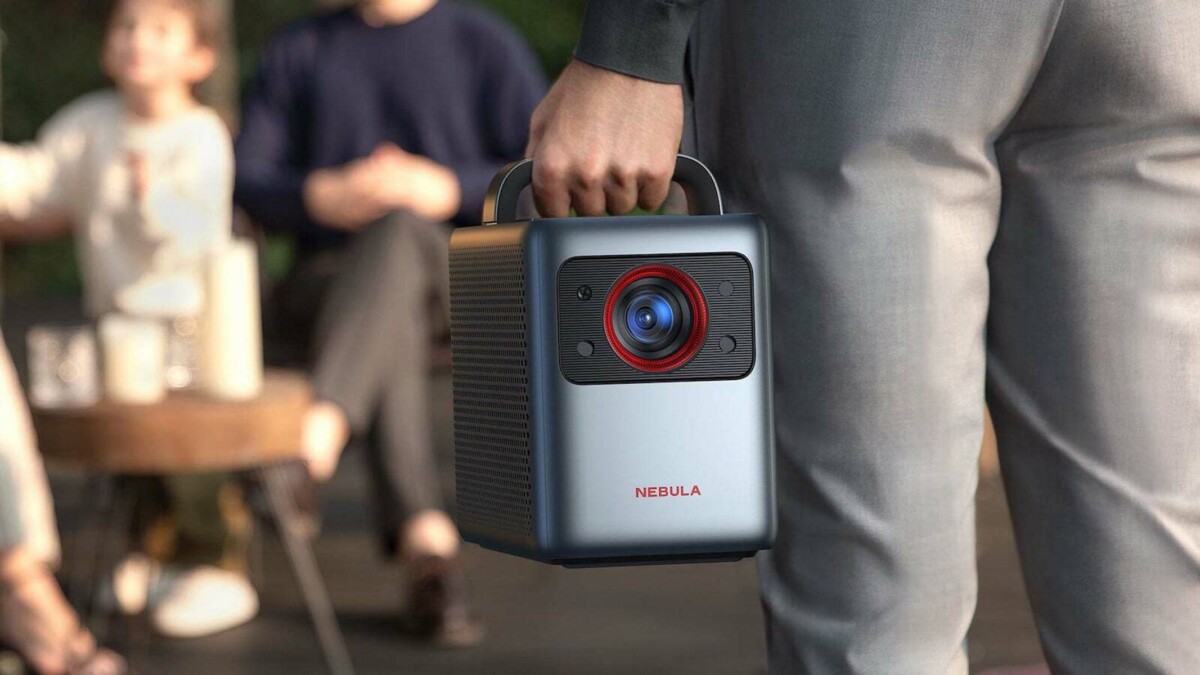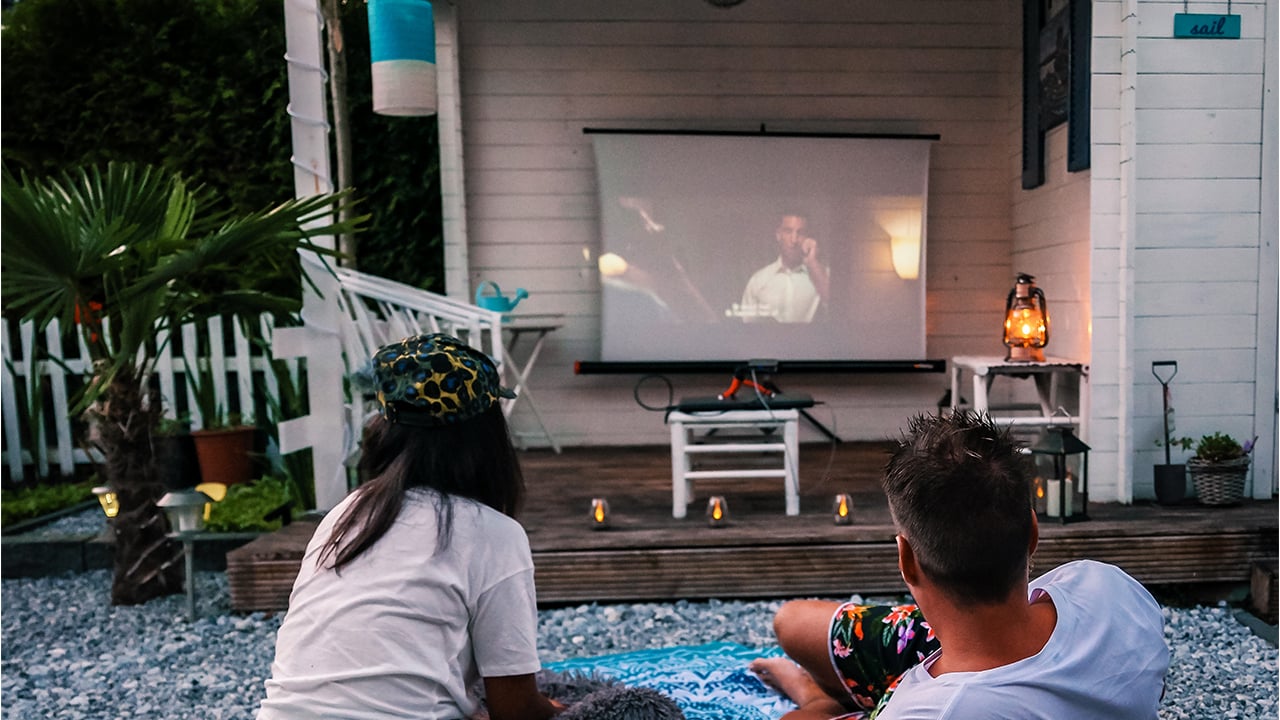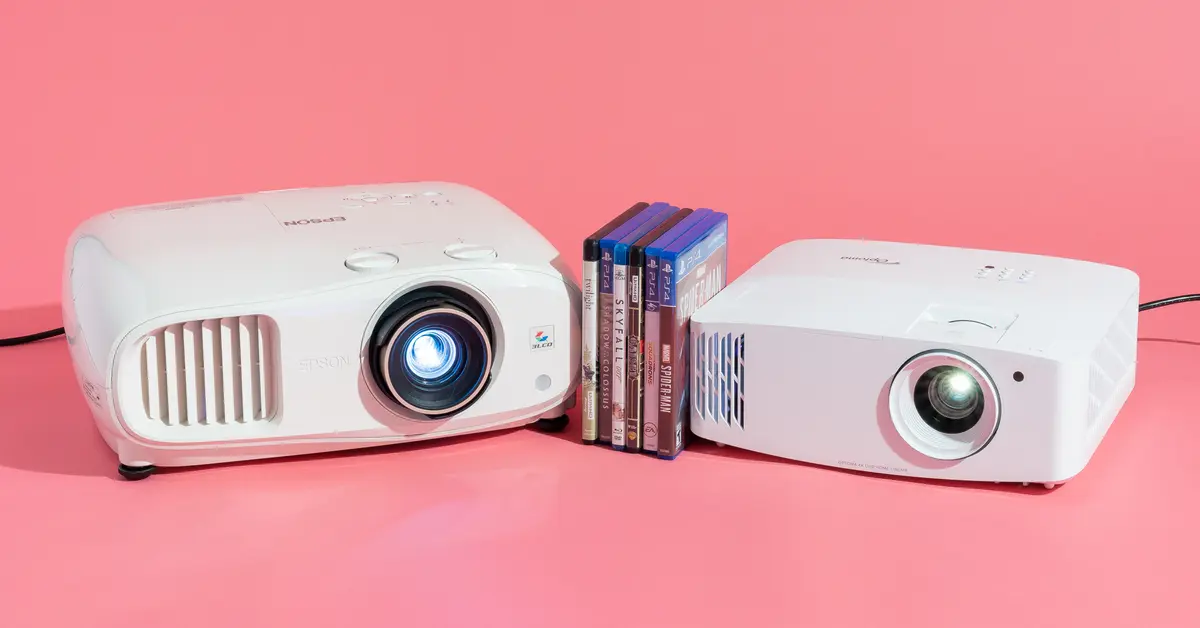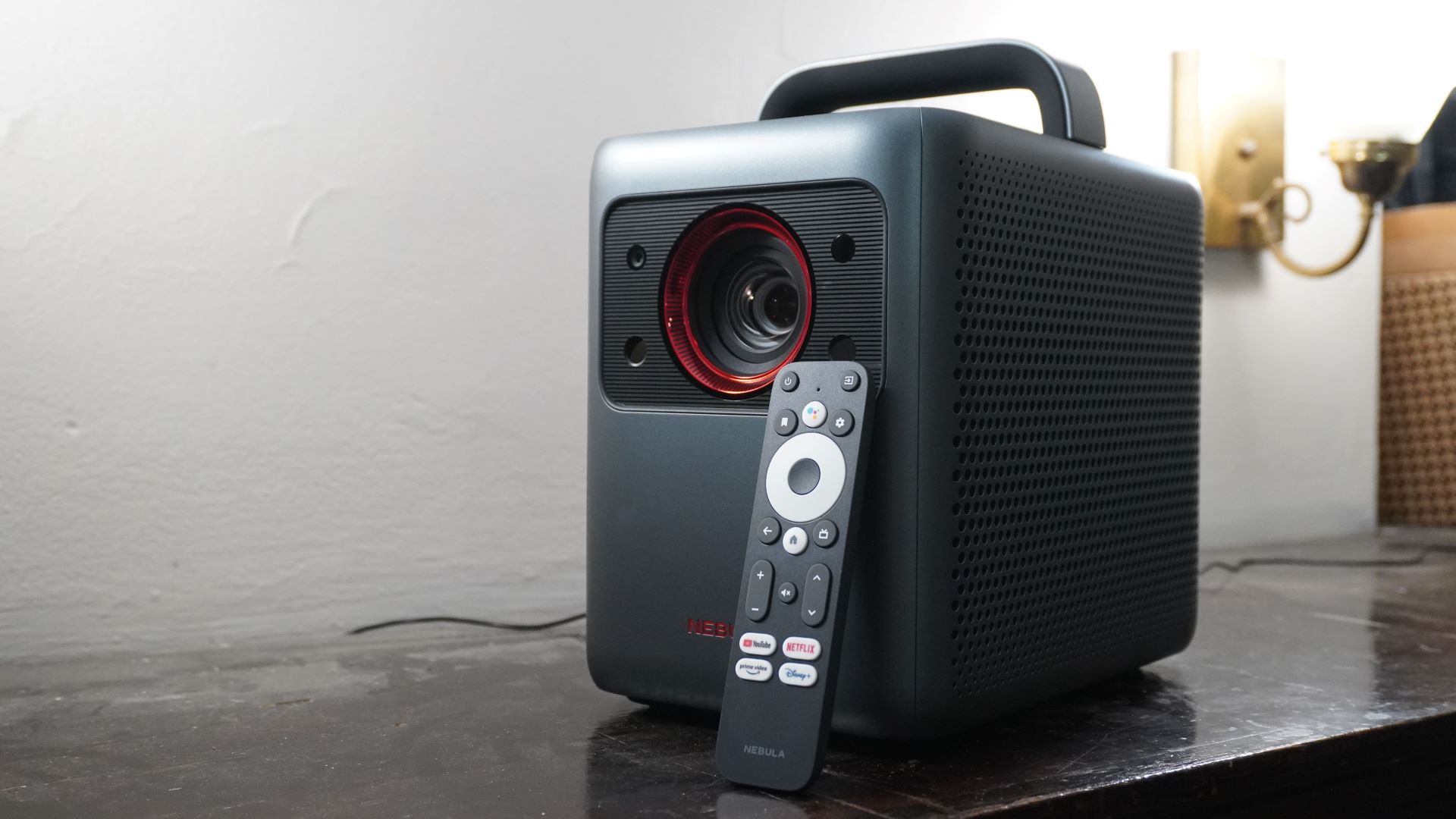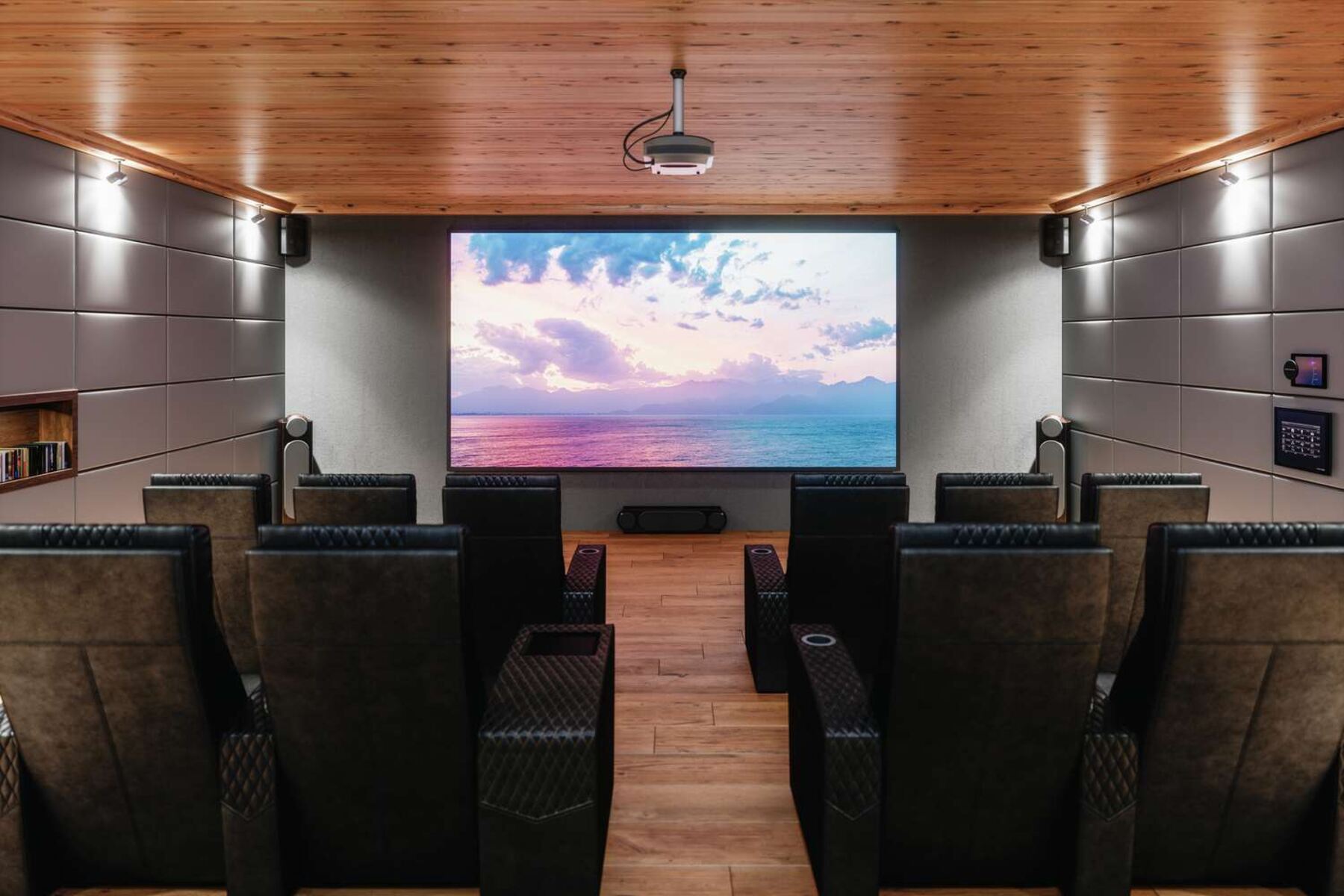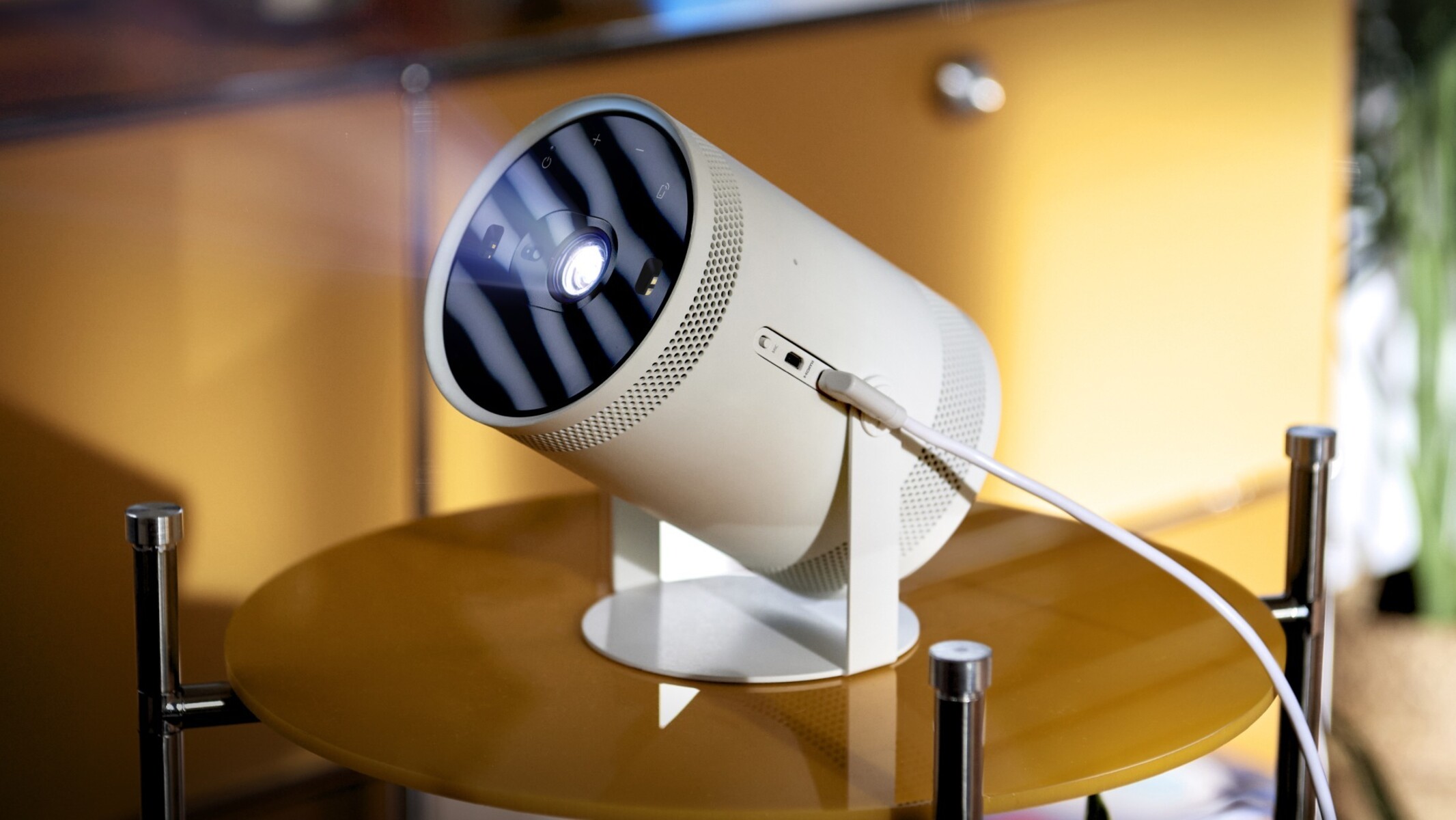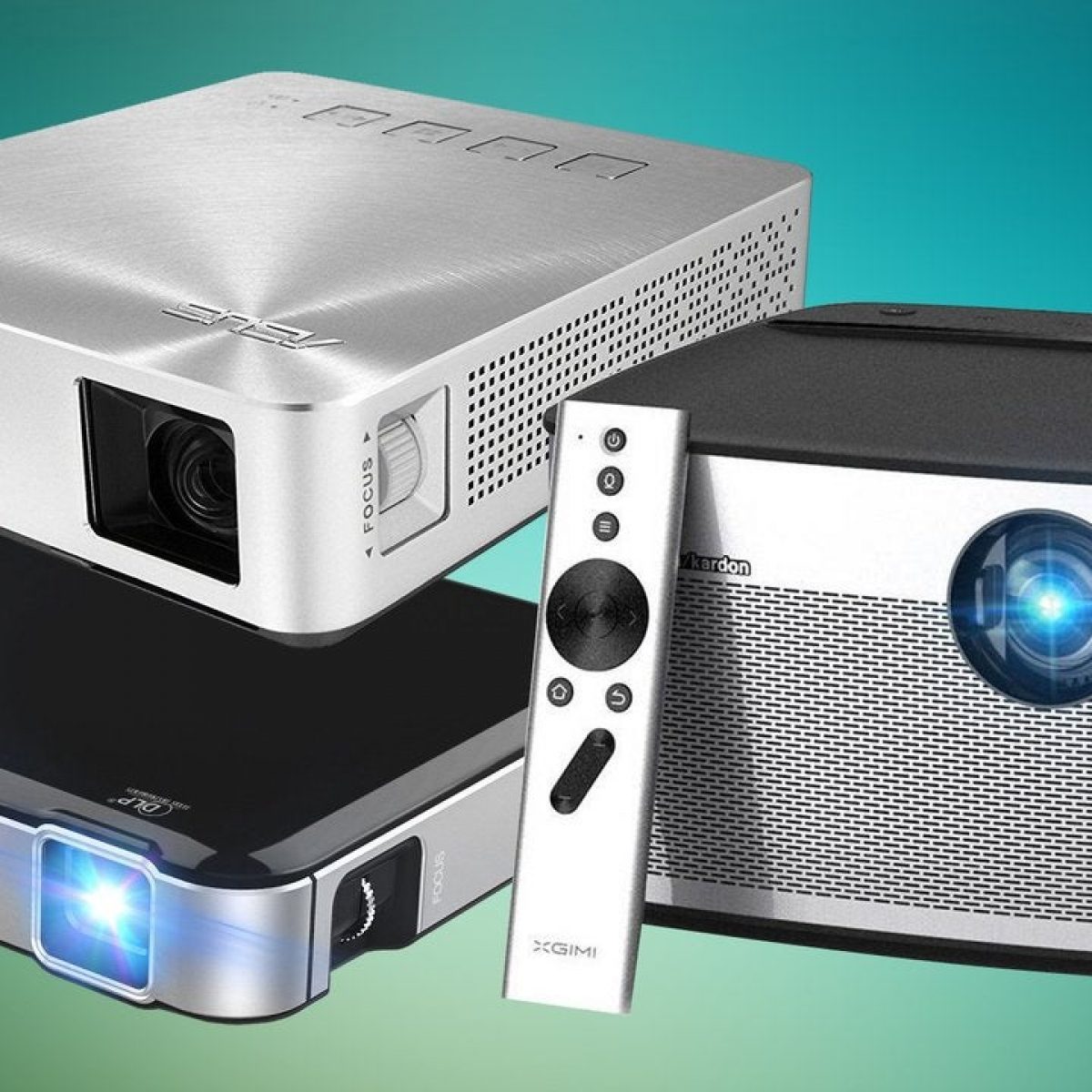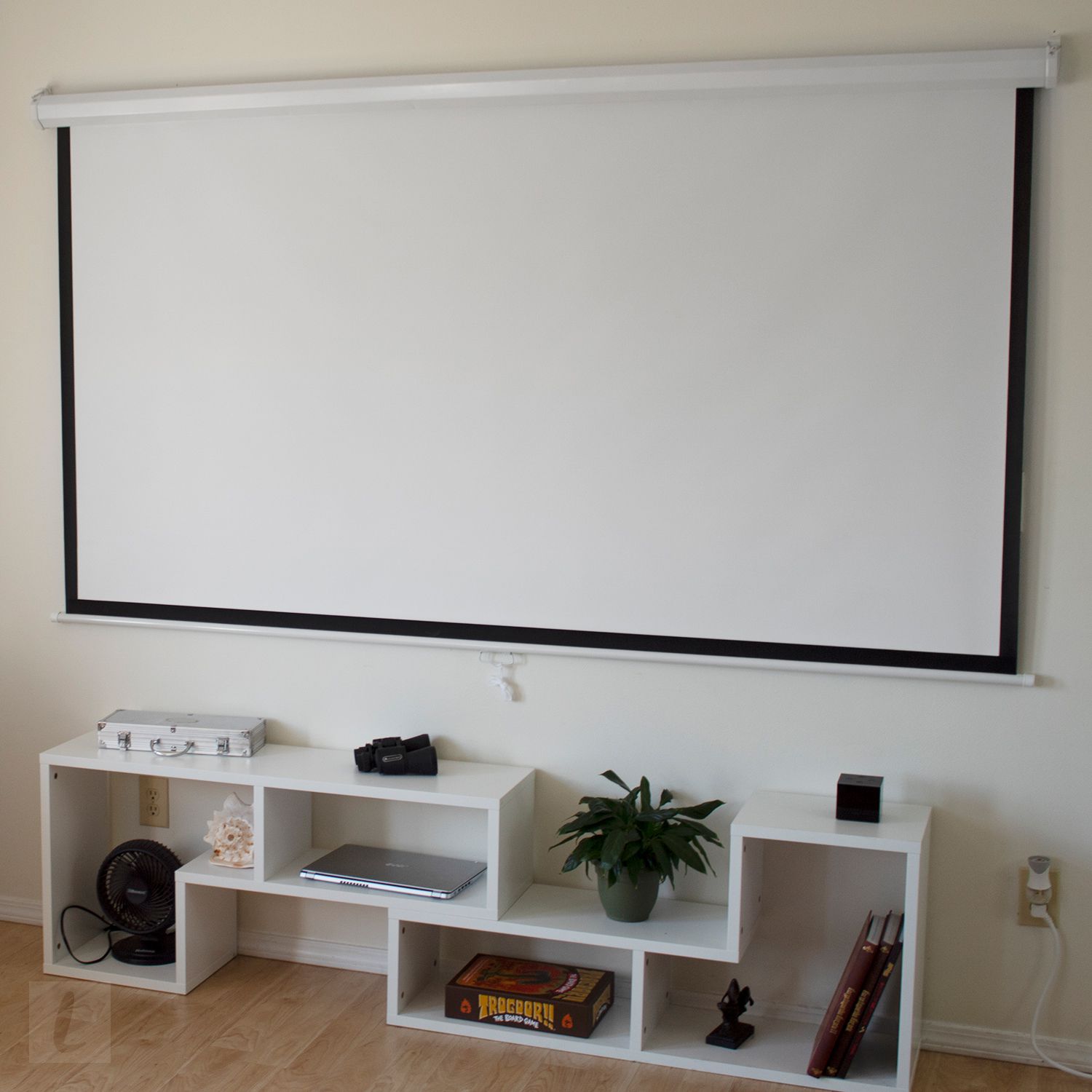Introduction
Welcome to the world of home projectors! If you’re a movie enthusiast or a gaming buff looking to take your entertainment experience to the next level, investing in a home projector is a fantastic option. With advancements in technology, home projectors have become more affordable, compact, and feature-packed, making them an attractive alternative to traditional televisions.
But with so many options available in the market, how do you choose the right home projector that suits your needs and preferences? In this article, we will explore the key factors that you should consider when selecting a home projector. From image quality to connectivity, audio quality to size and portability, we’ll cover all the aspects to help you make an informed decision.
One of the primary considerations when purchasing a home projector is the image quality that it delivers. After all, you want a projector that can reproduce stunning visuals and bring your favorite movies, TV shows, and games to life. In the following sections, we’ll delve into the various components that contribute to excellent image quality, such as resolution, contrast ratio, color accuracy, brightness, and throw distance.
Connectivity is another crucial aspect to consider. A versatile home projector should offer a wide range of connection options, allowing you to effortlessly connect your devices like gaming consoles, streaming devices, and laptops. We’ll guide you through the different connectivity options available in home projectors today.
Audio quality is also a significant factor to look for in a home projector. While many projectors come with built-in speakers, the audio output may not always meet your expectations. We’ll discuss the importance of audio quality and explore options for connecting external speakers or sound systems to enhance your viewing experience.
Noise level is another consideration that often goes overlooked but can significantly impact your overall enjoyment. Some projectors can produce loud fan noises, distracting from the immersive experience. We’ll help you understand the different noise levels and find a projector that operates quietly.
The size and portability of a home projector can make a difference, especially if you plan to use it in different rooms or take it with you on the go. We’ll discuss the various sizes and portability features available in projectors and help you find the right balance between convenience and performance.
Mounting options are also worth considering, as they determine the flexibility and ease of installation. Whether you want to mount your projector to the ceiling or prefer a tabletop setup, we’ll explore different mounting options and their benefits.
Lastly, budget is always a significant factor when making a purchase decision. We’ll provide an overview of the price range for home projectors, helping you find one that fits your budget without compromising on the essential features.
Now that we’ve covered the introduction to what to look for in a home projector, let’s dive into the first aspect: image quality.
Image Quality
When it comes to home projectors, image quality is paramount. After all, the primary purpose of a projector is to deliver a visually immersive experience. When considering image quality, there are several factors to keep in mind, including resolution, contrast ratio, color accuracy, brightness, and throw distance.
Resolution plays a crucial role in image quality, determining the level of detail and clarity the projector can produce. The most common resolutions for home projectors are 1080p (Full HD) and 4K Ultra HD. A 1080p projector displays a resolution of 1920 x 1080 pixels, while a 4K projector offers four times the resolution with 3840 x 2160 pixels. Higher resolution projectors provide sharper and more detailed images, especially when paired with high-quality content.
The contrast ratio of a projector measures the difference between the brightest whites and the darkest blacks it can produce. A higher contrast ratio results in a more vibrant and dynamic image. Look for projectors with a high contrast ratio to ensure that your movies and games have a rich and lifelike appearance.
Color accuracy is essential for reproducing realistic and vivid colors. A wide color gamut and accurate color calibration ensure that the projector can display colors as intended by the content creators. Look for projectors with support for HDR (High Dynamic Range) for enhanced color performance and a broader range of brightness levels, resulting in more vibrant and lifelike visual experiences.
The brightness of a projector is measured in lumens and determines how well the image displays in well-lit or dark environments. The higher the lumen count, the brighter the projection will be. If you plan to use the projector in a brightly lit room, look for a model with higher brightness to ensure clear visibility and avoid washed-out colors.
The throw distance refers to the distance between the projector and the screen required to achieve a specific image size. Different projectors have different throw distances, so it’s essential to consider your available space and desired screen size. Consider whether you want a short-throw projector, which can project a large image even in close proximity, or a long-throw projector for larger spaces.
By carefully evaluating these aspects of image quality, you can find a home projector that delivers stunning visuals and an immersive viewing experience. In the following sections, we’ll explore additional factors to consider when choosing the perfect home projector.
Resolution
Resolution is a crucial factor to consider when choosing a home projector. It determines the level of detail and clarity that the projector can deliver in the images it displays. Higher resolution projectors offer sharper, more detailed visuals, providing a more immersive viewing experience.
The most common resolutions for home projectors are 1080p (Full HD) and 4K Ultra HD. A 1080p projector has a resolution of 1920 x 1080 pixels, while a 4K projector offers a resolution of 3840 x 2160 pixels, providing four times the number of pixels as 1080p. The higher the resolution, the finer the details that can be displayed, resulting in a more lifelike image.
If you primarily watch high-definition content, such as Blu-ray movies or streaming services that support 1080p resolution, a 1080p projector will deliver excellent image quality. It can reproduce crisp details and vibrant colors, bringing your favorite movies and TV shows to life.
However, if you want to future-proof your home theater setup and enjoy the latest in visual technology, you may consider investing in a 4K projector. With its higher resolution, a 4K projector provides unparalleled detail and clarity, especially when paired with native 4K content. It allows you to fully experience the intricate textures, fine details, and smooth gradients that 4K content offers.
It’s important to note that the benefit of 4K resolution is more noticeable on larger screens or when sitting closer to the screen. If you have a smaller viewing area or sit at a typical viewing distance, the difference between 1080p and 4K may be less pronounced. Consider the size of your screen and your viewing distance when deciding on the resolution that best suits your needs.
It’s also worth mentioning that not all projectors labeled as “4K” are true 4K projectors. Some projectors use a technology called pixel shifting or pixel wiggling to simulate a higher resolution. While these projectors can still produce excellent images, they may not deliver the same level of detail as native 4K projectors.
In summary, resolution is a critical aspect to consider when selecting a home projector. A 1080p projector provides fantastic image quality and is suitable for most high-definition content. On the other hand, a 4K projector offers unparalleled detail, allowing you to fully immerse yourself in the finest textures and intricacies of native 4K content. Choose a resolution based on your content preferences, viewing distance, and budget to ensure an exceptional viewing experience.
Contrast Ratio
When it comes to image quality, contrast ratio is a crucial factor to consider in a home projector. It refers to the difference between the brightest whites and the darkest blacks that a projector can produce, resulting in a more vibrant and dynamic image.
A high contrast ratio is desirable as it allows for better differentiation between different shades of color and provides a more realistic and immersive viewing experience. It enhances the overall picture quality by adding depth and detail to dark scenes while preserving the brightness and clarity of bright scenes.
Contrast ratio is typically expressed as a ratio between the brightness of the brightest white and the darkest black. For example, a projector with a contrast ratio of 10,000:1 means that the brightest white is 10,000 times brighter than the darkest black that the projector can display.
Higher contrast ratios result in more vibrant and lifelike images. Darker blacks make colors appear richer and more intense, while brighter whites provide a more striking and dynamic visual experience. This is particularly important when watching movies or playing games with scenes that have a significant range of brightness, such as a starry night sky or a brightly lit cityscape.
It’s important to note that the advertised contrast ratio by manufacturers may not always represent the actual contrast ratio that you’ll experience in real-world usage. Manufacturers often use different measurement methods or employ dynamic contrast technology to artificially boost the contrast ratio. Dynamic contrast adjusts the contrast on the fly depending on the content, resulting in a perceived higher contrast ratio.
When choosing a home projector, it’s recommended to consult expert reviews or conduct thorough research to get an accurate understanding of the projector’s actual contrast performance. This will help ensure that you are getting a projector with a high-quality contrast ratio that meets your expectations.
In summary, contrast ratio is an essential consideration when selecting a home projector. A higher contrast ratio provides better differentiation between blacks and whites, resulting in a more vibrant, detailed, and lifelike image. Look for projectors with high contrast ratios to enhance your viewing experience and bring your movies, TV shows, and games to life.
Color Accuracy
Color accuracy is a crucial aspect to consider when choosing a home projector. It refers to the projector’s ability to reproduce colors as accurately as possible, ensuring that the colors you see on the screen closely match the original intended colors.
Accurate color reproduction is vital for a captivating and immersive viewing experience. Whether you’re watching movies, playing games, or enjoying your favorite TV shows, accurate colors can bring scenes to life, making them more vibrant, realistic, and visually appealing.
A projector with good color accuracy can display a wide color gamut, ensuring that it can reproduce a wide range of colors. It should also have accurate color calibration, meaning that the colors are calibrated to industry-standard color spaces such as Rec. 709 or DCI-P3. This ensures that the projector can accurately reproduce colors as intended by content creators.
High Dynamic Range (HDR) is a technology that further enhances color accuracy by expanding the color gamut and providing a broader range of brightness levels. HDR-compatible projectors can display a wider range of colors, from deep blacks to vibrant reds and blues. This results in more lifelike and dynamic images with better contrast and color saturation.
When considering color accuracy, it’s important to note that the quality of the source content plays a significant role. For example, if you’re watching a movie or playing a game that is poorly color graded or encoded, even the most accurate projector may not be able to produce accurate colors.
In addition to the projector’s capabilities, the viewing environment also affects color accuracy. Factors like ambient light, wall color, and screen material can influence how colors are perceived. It’s recommended to create a controlled and optimized viewing environment by using a dedicated projection screen with neutral color properties and minimizing ambient light to ensure the best color accuracy.
Before purchasing a home projector, it’s advisable to check expert reviews and user testimonials to get an idea of the projector’s color accuracy. Look for projectors with positive feedback regarding color reproduction and accurate color calibration.
In summary, color accuracy is a vital factor to consider when selecting a home projector. Look for projectors with a wide color gamut, accurate color calibration, and HDR compatibility to ensure vibrant and realistic color reproduction. Keep in mind that the quality of the source content and the viewing environment also play a significant role in the overall color accuracy.
Brightness
Brightness is an important consideration when choosing a home projector. It refers to the amount of light that the projector can emit, ultimately impacting the visibility and clarity of the projected image. The brightness of a projector is measured in lumens.
Choosing the right brightness level depends on your specific viewing environment. If you plan to use the projector in a well-lit room or with ambient light, a higher brightness level is essential to counteract the competing sources of light. A projector with higher lumens will maintain a clear and vibrant image, preventing the colors from appearing washed out or dull.
On the other hand, if you have a dedicated home theater room or can completely control the ambient lighting, you may opt for a projector with lower brightness. In a dark room, lower brightness projectors can still produce exceptional image quality without causing eye strain or discomfort.
The appropriate brightness level also depends on the size of the screen or projection surface. Larger screens require more light output to maintain a consistent and bright image across the entire surface. As a general rule, aim for at least 1,500 lumens for smaller screens (up to 100 inches) and higher lumens for larger screens or rooms with ambient light.
It’s important to note that higher brightness levels often come at a premium cost. If you have a limited budget or don’t require extreme brightness, a projector with moderate lumens may suffice for your needs.
When considering brightness, it’s crucial to keep in mind that projectors often have multiple brightness modes or settings. These modes can be adjusted based on your specific viewing conditions. For instance, some projectors have an Eco mode, which reduces brightness to conserve energy and extend lamp life. Conversely, a high brightness mode can be enabled for situations where maximum light output is needed.
Additionally, some projectors may come with features like dynamic iris or dynamic lamp control, which automatically adjust the brightness to match the content being displayed. This can help optimize the contrast and overall visual quality of the projected image.
In summary, choosing the right brightness level for your home projector depends on the viewing environment, screen size, and personal preference. Consider the level of ambient light in your room and the desired screen size to determine the appropriate brightness level, aiming for a balance between vibrant image quality and budget considerations.
Throw Distance
Throw distance is a critical factor to consider when choosing a home projector. It refers to the distance between the projector and the screen required to achieve a specific image size. Understanding the throw distance is essential for determining the projector placement and ensuring that it fits within your available space.
The throw distance is influenced by the projector’s lens and its positioning. Different projectors have different throw distances, which can be categorized as short-throw, long-throw, or standard-throw projectors.
A short-throw projector is designed to project images at a short distance from the screen, typically requiring a throw distance of less than 4 feet. This makes it an ideal choice for smaller rooms or spaces where there may be limited distance between the projector and the screen. With a short-throw projector, you can achieve a large image size even in close proximity to the screen, maximizing your viewing experience in compact environments.
A long-throw projector, on the other hand, requires a significant distance between the projector and the screen to achieve a larger image size. These projectors are suitable for larger rooms or spaces where there is ample distance available. They allow you to project a large image onto a screen or wall, providing a more immersive viewing experience.
Standard-throw projectors fall somewhere in between short-throw and long-throw projectors in terms of throw distance requirements. They are versatile and can be placed at a moderate distance from the screen to achieve a desirable image size.
When considering the throw distance, it’s crucial to measure the available space and consider factors such as the size of your room, the placement of furniture, and any potential obstructions. You should also take into account the desired screen size and the projector’s zoom capabilities, as they can affect the throw distance range.
If you have a limited throw distance, you may need to consider a short-throw projector or look for a projector with a wide-angle lens or a zoom lens that offers flexibility in projector placement.
It’s worth noting that some projectors feature lens shift or keystone correction capabilities, which can help rectify image distortion caused by the projector not being placed exactly perpendicular to the screen. These features can be useful if you have limitations in projector placement due to room layout or mounting options.
In summary, understanding the throw distance is crucial for selecting the right home projector. Consider the available space, desired screen size, and projector placement options to determine whether a short-throw, long-throw, or standard-throw projector is most suitable for your needs. Choose a projector that allows for flexibility in placement or offers features like lens shift or keystone correction if required.
Connectivity
Connectivity is a vital aspect to consider when choosing a home projector. A versatile projector should offer a wide range of connection options to ensure compatibility with various devices and enable seamless integration into your home entertainment setup.
One of the most common connectivity options is HDMI (High-Definition Multimedia Interface). HDMI allows for digital transmission of audio and video signals, providing high-quality audio and video output. Most modern devices such as Blu-ray players, gaming consoles, and streaming devices use HDMI as the standard connection method. Ensure that the projector has at least one HDMI input port to connect these devices.
USB ports are another important connectivity feature to consider. USB ports allow for easy playback of multimedia files directly from USB drives or external hard drives. They can also be used to connect wireless dongles or adapters for streaming content, wireless screen mirroring, or even connecting wireless mouse and keyboard for easier navigation.
Wireless connectivity options, such as Wi-Fi or Bluetooth, can greatly enhance the projector’s versatility and convenience. Wi-Fi connectivity enables wireless streaming of media from compatible devices or accessing online content directly on the projector. With Bluetooth, you can connect wireless speakers, headphones, or other audio devices for a more immersive audio experience without the need for extra cables.
For older devices that do not have HDMI output or wireless capabilities, having composite or component inputs can be beneficial. These inputs allow you to connect devices with analog video or audio signals, such as older gaming consoles or DVD players. Keep in mind that the image quality may be lower when using analog connections compared to digital HDMI connections.
Additional connectivity options to consider include audio output ports, such as 3.5mm audio jack or optical audio output. These ports allow you to connect external speakers or audio systems for better sound quality. Some projectors also have built-in speakers, though they may not deliver the same audio quality as dedicated speakers.
If you plan to use the projector for presentations or connecting to a laptop, having VGA or DisplayPort inputs can be useful for compatibility with older devices or specific professional settings.
When choosing a home projector, ensure that it offers the connectivity options that suit your specific needs. Consider the devices you plan to connect, the type of content you want to access, and the audio setup you prefer. Having a variety of connectivity options will make it easier to integrate the projector into your existing home entertainment system.
Audio Quality
While the visual aspect of a home projector is important, audio quality is equally crucial for a complete and immersive entertainment experience. Though many projectors come with built-in speakers, the audio output may not always meet your expectations, especially in larger rooms or if you prefer a more robust sound.
When evaluating the audio quality of a home projector, consider factors such as speaker power, frequency range, and audio enhancement technologies. Look for projectors with higher-wattage speakers for louder and more dynamic sound reproduction. A higher wattage typically indicates better audio performance and the ability to fill a larger room with sound.
Frequency range is another critical aspect to consider, as it determines the range of frequencies that the speakers can reproduce. Look for projectors with a wide frequency range to ensure that they can accurately reproduce low bass notes and high-frequency sounds, resulting in a fuller, more balanced audio experience.
Some projectors may feature audio enhancement technologies, such as built-in equalizers or virtual surround sound. These technologies can enhance the audio quality and create a more immersive soundstage, providing a more engaging cinematic experience.
While built-in speakers can suffice for casual use or smaller rooms, if you want to enhance the audio experience, consider connecting external speakers or a sound system to the projector. Many projectors offer audio output ports, such as 3.5mm audio jack or optical audio output, allowing you to connect to external speakers or audio systems. This provides the flexibility to customize the audio setup to your preferences, ensuring optimal sound quality.
If you’re a true audiophile and desire the highest-quality sound, consider investing in a separate soundbar or surround sound system. These external audio devices can provide a more immersive and powerful audio experience, complementing the high-quality visuals delivered by the home projector.
It’s important to note that some projectors may have a cooling fan or other internal components that can generate noise. While this may not directly impact audio quality, it could affect the overall listening experience. Look for projectors with low noise levels, or consider locating the projector away from the listening area to minimize any potential noise disruptions.
In summary, considering audio quality is crucial when selecting a home projector. While built-in speakers are convenient, they may not provide the desired sound quality for a cinematic experience. Look for projectors with good speaker wattage, a wide frequency range, and audio enhancement technologies. Additionally, consider connecting external speakers or a sound system for a more immersive and powerful audio experience.
Noise Level
Noise level is an important factor to consider when choosing a home projector, as it can greatly impact your viewing experience. While projectors are equipped with cooling fans and other internal components to prevent overheating, these components can also generate noise.
When evaluating the noise level of a projector, it’s important to look for models that operate quietly. Some projectors are specifically designed to minimize noise, allowing you to fully immerse yourself in your movie or gaming session without distractions.
The noise level of a projector is typically measured in decibels (dB), with lower dB values indicating quieter operation. Projectors with noise levels below 30 dB are generally considered quiet, while those exceeding 40 dB may be noticeable and potentially disruptive in quiet viewing environments.
It’s worth noting that the noise level can vary based on the projector’s brightness or power settings. Some projectors have different modes, such as Eco mode, which reduces power consumption and noise level, while others have dedicated whisper-quiet modes that prioritize low noise operation.
To ensure a quieter viewing experience, you can try various strategies. First, consider locating the projector away from the seating area or utilizing projector mounts that have noise-absorbing features. Additionally, optimize the projector’s ventilation and airflow by ensuring proper ventilation space around the projector and cleaning the air filters regularly to prevent excessive fan noise caused by dust buildup.
Keep in mind that the noise produced by the projector may also depend on the environment in which it is placed. A well-ventilated and cool room can help reduce noise as the projector’s cooling fans may not need to work as hard.
If noise is a significant concern for you, it’s advisable to read expert reviews or user testimonials to gain insight into a specific projector’s noise performance. Going for projectors with positive feedback in terms of noise reduction and quiet operation can significantly enhance your viewing experience.
In summary, noise level is an important consideration when selecting a home projector. Look for projectors that operate quietly, preferably below 30 dB, to minimize distractions and fully enjoy your movies, TV shows, and games. Consider factors such as different power modes and maintenance practices to optimize the projector’s noise level in your specific viewing environment.
Size and Portability
Considering the size and portability of a home projector is essential, as it determines how easily you can set up and move the projector between different locations. Whether you plan to use the projector in a fixed home theater setup or bring it for outdoor movie nights, size and portability play a significant role.
The physical dimensions of the projector can affect its versatility and compatibility with the available space. Look for projectors with a compact and lightweight design, as they are easier to handle and transport. Compact projectors can be placed on shelves or tabletops, saving space and providing flexibility in positioning.
Portability is a key factor if you plan to move the projector frequently or use it in various locations. Portable projectors are typically smaller in size and come with carrying cases or handles, making it convenient to take them to different rooms or even outdoor gatherings.
Pay attention to the weight of the projector as well, especially if you plan to mount it on a ceiling or wall. Lighter projectors are easier to install, reducing the strain on mounting brackets or structures.
If you require maximum portability, consider battery-powered or wireless projectors. Battery-powered projectors allow you to use them without being tethered to a power source, making them ideal for camping trips or other outdoor activities. Wireless projectors eliminate the need for HDMI or audio cables, offering greater flexibility in projector placement without the constraints of wired connections.
While smaller and more portable projectors may offer convenience, it’s important to consider the trade-offs. Compact projectors may have lower brightness levels or fewer features compared to larger models. Assess your specific needs and priorities to strike the right balance between portability and performance.
Lastly, check the connectivity options of the projector to ensure compatibility with your devices and accessories. Look for projectors that offer multiple input and output ports, including HDMI, USB, and audio ports, allowing you to connect a variety of devices without the need for adapters or additional equipment.
In summary, considering the size and portability of a home projector is crucial for its ease of use and mobility. Look for compact and lightweight projectors that are easy to handle and transport. Depending on your specific needs, consider battery-powered or wireless projectors for maximum portability. Assess the trade-offs between size, portability, and performance to find the projector that best suits your requirements and usage scenarios.
Mounting Options
Mounting options are an important consideration when selecting a home projector. Depending on your preferred setup and the available space, different mounting options can provide convenience, flexibility, and an optimal viewing experience.
Ceiling mounting is a popular choice for home theaters or dedicated viewing rooms. Ceiling-mounted projectors create a clean and unobtrusive setup, freeing up valuable floor or tabletop space. This mounting option allows for optimal projector placement and adjusting the projected image to the desired height and angle. It is especially useful for larger screens or if you want to create a true cinema-like experience.
Wall mounting is another option that offers flexibility in projector placement. A wall-mounted projector is ideal for rooms with short ceilings or when ceiling mounting is not possible. It provides a stable and secure setup while allowing for easy adjustment of the projected image height and angle. Wall mounting can be a more convenient option if you plan to move the projector occasionally or if you want to avoid drilling into the ceiling.
If you prefer a more portable setup or need flexibility in projector placement, a tabletop or shelf mount is a convenient choice. These mounts provide a stable and adjustable platform for the projector, allowing you to position it on a table, shelf, or any flat surface. This option is particularly useful when you want to move the projector between rooms or if you plan to use it in different locations.
Many projectors come with adjustable feet or keystone correction features that allow for fine-tuning the image shape and alignment. These features can be helpful if you are unable to achieve a perfect perpendicular alignment between the projector and the screen or if you need to correct any distortion caused by the angled projection surface.
It’s important to choose a mounting option that suits the specific requirements of your viewing area. Consider factors such as the ceiling height, available wall space, furniture layout, and screen size when deciding on the best mounting option for your home projector.
Additionally, ensure that the mounting system you choose is compatible with the weight and size of your projector. Many mounting options come with weight limitations, so it’s important to check the specifications and ensure that the mount is suitable for your specific projector model.
In summary, mounting options play a crucial role in the setup and placement of a home projector. Ceiling mounting provides a clean and unobtrusive setup, while wall mounting offers flexibility when ceiling mounting is not possible. Tabletop or shelf mounts provide convenience and portability. Consider the specific requirements of your viewing area and ensure compatibility with your projector to make the best mounting decision for your home theater setup.
Price Range
Price range is an essential consideration when choosing a home projector. Projectors vary greatly in price, and determining your budget is crucial to finding the right balance between features, performance, and affordability.
Entry-level projectors, typically priced below $500, offer basic features and satisfactory image quality for casual home use. These projectors are suitable for smaller rooms or occasional movie nights, but they may not have the same level of brightness, resolution, or advanced features as higher-end models.
Mid-range projectors, ranging from $500 to $1500, offer a better balance between performance and affordability. They often come with improved image quality, higher brightness, and more connectivity options. These projectors are ideal for enthusiasts who want a more immersive viewing experience but may not require the highest-end specifications.
High-end projectors, priced above $1500, offer top-of-the-line performance, exceptional image quality, and advanced features. These projectors are typically used in dedicated home theaters or professional settings where uncompromising image quality and features are essential. High-end projectors often boast 4K resolution, high brightness levels, wide color gamut support, and advanced image enhancement technologies.
When determining your budget, it’s important to consider your personal needs, preferences, and usage scenarios. Think about the purpose of the projector, the size of your viewing area, the type of content you plan to watch, and the desired image quality. If you’re an avid movie buff or a passionate gamer, you may want to invest in a higher-end projector for a truly immersive experience. However, if you have a limited budget or only plan to use the projector occasionally, an entry-level or mid-range projector may suit your needs perfectly.
It’s worth mentioning that while price does correspond to certain features and performance levels, it’s important to read expert reviews and consider other factors, such as brand reputation and customer feedback. Sometimes, a projector from a lesser-known brand may offer exceptional value for money without compromising on quality.
In summary, determining your price range is crucial when selecting a home projector. Consider your specific needs, usage scenarios, and budget to find the projector that offers the right balance of features, performance, and affordability. Whether you opt for an entry-level, mid-range, or high-end projector, make sure to read reviews and consider the overall value that the projector provides for your intended use.
Conclusion
Choosing the right home projector requires careful consideration of various factors to ensure an immersive and enjoyable entertainment experience. Throughout this guide, we have explored key aspects to consider when selecting a home projector, including image quality, resolution, contrast ratio, color accuracy, brightness, throw distance, connectivity, audio quality, noise level, size and portability, mounting options, and price range.
Image quality, determined by resolution, contrast ratio, and color accuracy, is vital for reproducing stunning visuals and bringing your favorite movies, TV shows, and games to life. The brightness of the projector is essential, particularly in well-lit environments, to maintain a clear and vibrant image. Understanding the throw distance helps determine the projector’s placement and its compatibility with your available space.
Connectivity options play a crucial role in ensuring compatibility with your devices and seamless integration with your home entertainment setup. Audio quality can enhance the overall viewing experience, whether through built-in speakers or external sound systems. Noise level is an important consideration, as a quiet projector helps maintain focus and immersion during your entertainment sessions.
Considering the size, portability, and mounting options of a home projector allows for flexibility in placement and ease of use. And, of course, your budget will dictate which projector options are most suitable for your needs and requirements.
By taking into account these factors and understanding how they align with your specific preferences and usage scenarios, you can make an informed decision and find the perfect home projector that meets your entertainment needs.
Remember to research and read expert reviews to gain deeper insights into individual projector models and consider the long-term value they offer. It’s always helpful to assess multiple options and compare their features, performance, and user feedback to find the projector that aligns best with your desires and budget constraints. With the right home projector, you can transform your living room into a captivating home theater and enjoy countless hours of cinematic bliss.







